Inroads into the structure and function of intermediate filament networks
- PMID: 22120848
- PMCID: PMC3269975
- DOI: 10.1016/j.jsb.2011.11.017
Inroads into the structure and function of intermediate filament networks
Abstract
Although intermediate filaments are one of three major cytoskeletal systems of vertebrate cells, they remain the least understood with respect to their structure and function. This is due in part to the fact that they are encoded by a large gene family which is developmentally regulated in a cell and tissue type specific fashion. This article is in honor of Ueli Aebi. It highlights the studies on IF that have been carried out by our laboratory for more than 40 years. Many of our advances in understanding IF are based on conversations with Ueli which have taken place during adventurous and sometimes dangerous hiking and biking trips throughout the world.
Copyright © 2011 Elsevier Inc. All rights reserved.
Figures
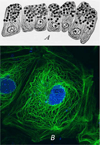
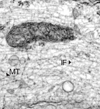

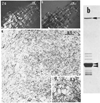
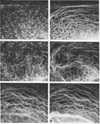
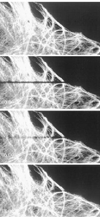




Similar articles
-
Structural analysis of vimentin and keratin intermediate filaments by cryo-electron tomography.Exp Cell Res. 2007 Jun 10;313(10):2217-27. doi: 10.1016/j.yexcr.2007.03.037. Epub 2007 Apr 11. Exp Cell Res. 2007. PMID: 17499715 Review.
-
Characterization of distinct early assembly units of different intermediate filament proteins.J Mol Biol. 1999 Mar 12;286(5):1403-20. doi: 10.1006/jmbi.1999.2528. J Mol Biol. 1999. PMID: 10064706
-
Regulation of assembly-disassembly of intermediate filaments in vitro.Cell Struct Funct. 1989 Jun;14(3):279-86. doi: 10.1247/csf.14.279. Cell Struct Funct. 1989. PMID: 2476247 Review. No abstract available.
-
Apparent stiffness of vimentin intermediate filaments in living cells and its relation with other cytoskeletal polymers.Biochim Biophys Acta Mol Cell Res. 2020 Aug;1867(8):118726. doi: 10.1016/j.bbamcr.2020.118726. Epub 2020 Apr 19. Biochim Biophys Acta Mol Cell Res. 2020. PMID: 32320724
-
2,5-hexanedione aggregates vimentin-, but not keratin-, intermediate filaments of PtK1 cells.Cell Biol Int Rep. 1987 Apr;11(4):307-18. doi: 10.1016/0309-1651(87)90092-0. Cell Biol Int Rep. 1987. PMID: 2439214
Cited by
-
Structure of the Bacterial Cytoskeleton Protein Bactofilin by NMR Chemical Shifts and Sequence Variation.Biophys J. 2016 Jun 7;110(11):2342-2348. doi: 10.1016/j.bpj.2016.04.039. Biophys J. 2016. PMID: 27276252 Free PMC article.
-
Intermediate filaments in cardiomyopathy.Biophys Rev. 2018 Aug;10(4):1007-1031. doi: 10.1007/s12551-018-0443-2. Epub 2018 Jul 19. Biophys Rev. 2018. PMID: 30027462 Free PMC article. Review.
-
Vimentin intermediate filament assembly regulates fibroblast invasion in fibrogenic lung injury.JCI Insight. 2019 Apr 4;4(7):e123253. doi: 10.1172/jci.insight.123253. eCollection 2019 Apr 4. JCI Insight. 2019. PMID: 30944258 Free PMC article.
-
Sequence-resolved free energy profiles of stress-bearing vimentin intermediate filaments.Proc Natl Acad Sci U S A. 2014 Aug 5;111(31):11359-64. doi: 10.1073/pnas.1403122111. Epub 2014 Jul 21. Proc Natl Acad Sci U S A. 2014. PMID: 25049381 Free PMC article.
-
Unraveling Desmin's Head Domain Structure and Function.Cells. 2024 Mar 29;13(7):603. doi: 10.3390/cells13070603. Cells. 2024. PMID: 38607042 Free PMC article.
References
-
- Aebi U, Cohn J, Buhle L, Gerace L. The nuclear lamina is a meshwork of intermediate-type filaments. Nature. 1986;323:560–564. - PubMed
Publication types
MeSH terms
Substances
Grants and funding
LinkOut - more resources
Full Text Sources
Other Literature Sources
Miscellaneous

